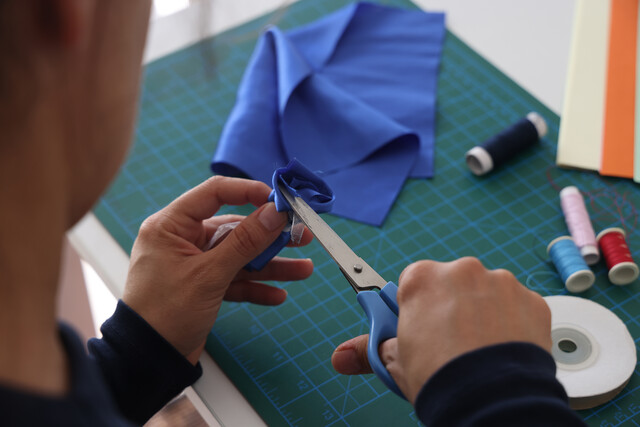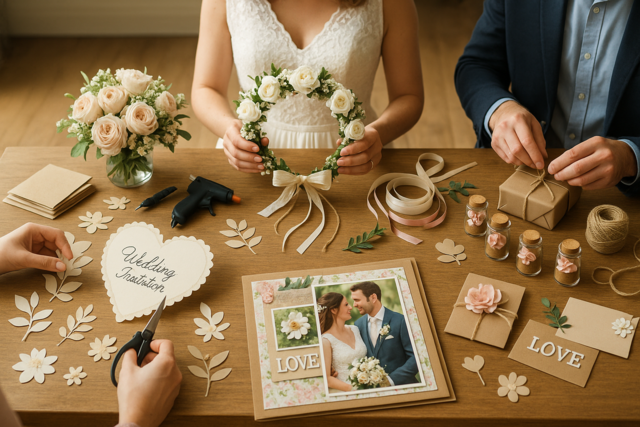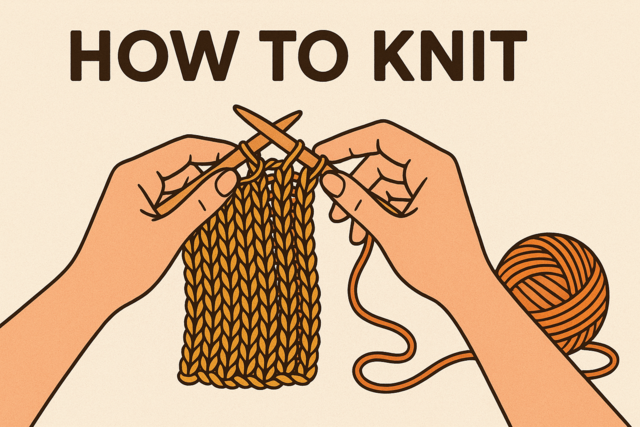Welcome to the world of Floral Arranging!
The way we arrange flowers today has very deep roots in the history of the world. There are two distinct schools of thought when it comes to floral arrangements. Eastern design that comes to us from the Orient and east and southeast Asia. Western design is the result of a number of influences primarily from European floral designers.
Eastern Design
Oriental floral design is truly an art form, based on a linear style. It bears no resemblance to the Western design style of combining flowers in masses. The Eastern Design is based on Ikebana , which is the art of a floral design that makes the flowers appear as if they are still alive.
Most floral designers would argue that this is their intention in all arrangements, but the Oriental method of floral arrangement takes many years to master. Ikebana takes the stems, leaves, and flowers and arranges them in a number of ways, based on seven centuries of history.
Ikebana is divided into two main styles: arrangements that are in a shallow dish, called Moribana, and the Nageire style that is in a tall vase.
The Seika or Shoka style of Ikebana is another style of Oriental floral design that is not as formal as the Rikka style which is very structured and uses wiring to hold things in place, and is combined with the simplicity of Chabana, which means "Tea Flowers", and allows for simple floral arrangements to be used during a tea ceremony.
Most of the time, arranged flowers were placed in an alcove of a room where visitors are usually received. Today this would translate to entrance halls, lobbies of hotels and offices, and living rooms of private homes.
The philosophy behind Ikebana is to marry the choice of flowers with the container that is used for the arrangement. Both the flower and the container must blend in with the environment and the key consideration is to use as few stems and leaves as possible to highlight the beauty of the flowers. This is in stark contrast to the Western method of flower arrangement that plays heavily on the European principle of arranging masses and bunches of flowers into an arrangement.
Eastern floral design is very simple. Ikebana is Japanese for "Make flowers come alive". Many religions of the world have used flowers to mark special locations where offerings and sacrifices have been made to the gods, and much of the Eastern design is linked to the teachings of Buddha.
The initial form of Eastern design has three main parts:
1. A single dominant branch with two lesser companions.
2. Shin, soe, and tai, with tai being the least dominant of all.
- Rikka - Tall standing flowers with seven branches that represent various objects of nature.
- Chabana - Simple tea ceremony style of floral arrangement.
- Shoka - Only three main branches, ten, chi, and jin which represent heaven, earth, and man/woman respectively.
- Nageire - Characterized by a tight bundle of stems creating a classic three-branched arrangement.
- Moribana - Arrangements in a shallow dish.
Eastern floral design has very strict rules that one must follow when making specific arrangements, whether it is:
If you intend to go into floral arranging as a career, you will eventually study some of the basic principles of Eastern floral design, but that is far beyond the scope of this class.
Western Design
Western floral design has its roots in Eastern design, but it is heavily blended with the European method of massing great bundles of flowers together into an arrangement.
Trends Through the Ages
Our modern methods of arranging flowers have developed over the centuries, going as far back as 3000BC in Egypt. From the wall paintings found in the ancient burial chambers, we know that they used lotus flower blossoms in bowls. Very little effort was put into the arrangement, but quite obviously, flowers were important during ceremonies.
The writings of Plato and Pliny demonstrate that the Italians were quite knowledgeable about plants and that flowers were used for ceremonial and healing purposes in the form of garlands and wreaths. Shortly after 2AD an illustration showed a basket of flowers; hyacinths, tulips, carnations, and morning glories. Toward the end of the Roman Empire, they used roses and rose petals to decorate banquet tables and for celebrations. Sounds a little like our present day weddings, doesn't it?
During the Dark Ages, various types of flowers were used in vases to symbolize various things. The Renaissance saw a great increase in gardening and for the first time, flowers were cultivated for beauty as well as for medicinal purposes. Because the average person could not read, flower types were used for communication. For example:
-
Lilies = Purity
-
Iris = Majesty
-
Dianthus = Human Love
America 1620 - 1800: during the time of the economic flourish of the Dutch, America was being colonized. While not a lot of attention was given to flower arranging, ways to preserve both food and flowers was of great interest. Most flower arranging simulated England's little posies or groupings of flowers or herbs that were in season. There is some evidence of larger massed bouquets as well as using floral arrangements to match the color or decorating style of a room.
Britain 1714 - 1830: The Georgian Period. The French Rococo style was responsible for the way flowers were arranged as well as how the containers used. Much emphasis was on pastels, wavy, curvy lines, and a lighthearted approach to arranging. This period saw a massing of flowers without much foliage or greenery. It was during this time that certain rules were applied to flower arranging regarding the height of the flowers and the height of the overall arrangement including the container.
Britain 1830 - 1900: The Victorian Era. By this time flowers were being cultivated and used everywhere. Most were massed together with no center of interest. Flowers were carefully arranged to be carried during social calls, however, The Victorian era saw great bunches of flowers with trailing and draping ivy or fern. The Victorians wore flowers in their hair and as corsages.
The History of the Meaning of Flowers
In order to really understand the language of flowers, you will have to do some additional research.
This covers flowers A - Z, the type of flower, color, and what each of them mean. It's pretty interesting reading because one would think that a rose simply means, "I love you," right?
The Elements of Design
Form
When discussing the attributes of a flower, we use the term "form" rather than shape. Shape indicates a two dimensional, flat object. One example would be pressed flowers. Form defines a three dimensional object.
Form can describe a stem, a leaf, a flower, or even the entire arrangement.
Round Forms
Flowers - Round flowers play the biggest role in the design of a floral arrangement. They are the most dominant form in its design. The circular shape draws the eye and helps the viewer to focus on a focal point in the arrangement before moving on to the other elements of the design.
Round flowers include: Carnations, Peonies, Roses (open), Lilies, Daisies, Dahlias, Chrysanthemums, Hydrangea, Ranunculus, etc.
Foliage - Round foliage refers to the leaves that are included in a floral arrangement. This allows the eye of the viewer to rest before moving on to the other elements.
Round foliage includes: Ivy, Geranium, and Flowering Currant. While the following ivy leaf is not completely circular, it is still considered to be a round element in the design of a floral arrangement:
Spray Forms
Spray Flowers - Spray flowers help to lighten and soften the overall arrangement. They add variation and interest, and help to fill in areas that might otherwise remain open. While they do not add height or definition to an arrangement, spray flowers do give it a fuller look. Spray flowers are small flowers that are on a stem from which there are multiple branches of additional flowers. Examples are Michaelmas daisies, spray roses, Baby's Breath, wax flower, sprays of blackberries, hips, privet berries, etc. Sprays lighten up an arrangement and fill in space.
Spray Foliage - Spray foliage does the same thing for an arrangement, but without adding anything but filler. It does not add color. Technically they are greens that have short secondary branches that come off the main stem. This helps to add bulk to the arrangement.
Line Forms
Line forms give a sense of height and openness to a display. This is especially important for larger arrangements. Line forms can be straight, or curving. They help draw your eye throughout the arrangement.
Line Flowers: A few examples of line flowers include any flowering branches like forsythia or flowering almond. Other line flowers would include tall flowers like delphinium, gladiolus, and hyacinth.
Line Foliage: Linear foliage is often placed into an arrangement first. It can be straight or slightly curved, and is used to create a three dimensional skeleton of an arrangement. Line foliage needs to have interest throughout the stem, and not just at the tip. Curly willow counts because it is curly up and down the stem, even thought it doesn't have any foliage to speak of. Examples of other linear foliage include privet, box, beech, willow, dogwood, and more.
Arrangement Form:
Before you begin, consider what your arrangement will be in terms of its final form. It will be in one of three categories:
-
Mass - probably the most common form of western floral arranging where flowers are put together in large masses, with little space between stems.
-
Line - most of the Eastern floral design falls into the line category. There is often a great deal of room between individual stems of flowers.
-
Line Mass - This is an "east meets west" compromise. Much of the newest forms of arrangement fall into this category. Many of the floral competitions today provide a fantastic showing of this type of arrangement.
Space is actually what lies between solid matter. In an art class you might be asked to draw an "empty space" drawing, where you draw everything that isn't there. Space is achieved by your use of container. One of the reasons many designs are placed in glass is it elevates the arrangement without seeming to do so. Classic designs utilize space in a pretty uniform manner, whereas more modern contemporary designs are much more flexible with the use of space.
Color
Color is important for a number of reasons. As a floral designer, you must understand the function of color, how colors work together, and which colors might not work well together.
Human beings respond to color from birth, and show distinct color preferences throughout their life. Gender, education, levels of sophistication, and where people live can all have an effect on color choice. Color is heavily influenced by our ethnic traditions. For example, in America brides typically wear white, representing purity. In Asia, white is worn to funerals, and black is what is worn to weddings because it is the color of joy.
Climate and where you live in the world can have an effect on your response to color. People who live in the far north like Northern Canada, Alaska, and Scandinavia prefer lighter colors, yellows, whites, and sky blues. This is probably to counteract their very long and dark winters. People who live in an area that is foggy and overcast don't like the color gray, but people who live where it is frequently sunny are partial to grays.
Some people are more drawn to pastels. Pastel colors are cooler, and more appealing to people who are quieter, more introverted, more interested in quieter activities in life. Pastels are thought to be more soothing
Others are more drawn to vivid and bright colors. Reds, yellows, and oranges are designed to be energetic, cheerful, and invigorating. Color affects human beings in many ways, both conscious and subconscious ways. A very thorough understanding of color and how people respond to it is very important to someone who intends to work in the floral design field. Get a color wheel, have it near at hand and make sure you use it when you're working with your flowers.
Types of Arrangements
There is much to learn when it comes to arranging flowers. But, don't be intimidated! You'll start at the beginning, learning the basics of working with flowers, learning the elements of design, and before you know it, you'll be as comfortable creating flowers for a wedding as you are arranging a simple bouquet from the grocery store! You'll develop your eye and your abilities with each floral arrangement you create.
Some of the simplest floral arrangements are the creation of a small boutonniere for a man to wear either to a dance, event, or wedding. Most of them consist of a single flower such as this alstroemeria boutonniere pictured.. It is very simply wired, and taped with a small bit of seeded embellishment. You can use seeded eucalyptus or baby's breath if you like. Just remember to balance the fragile flower with smaller embellishments.
Other arrangements can be much larger, such as topiaries for weddings, or large tabletop arrangements to be used as a display in a foyer or meeting room.
Here are a few more pictures of larger arrangements. You'll notice that some arrangements are long and short, others are tall and round, and still others are triangular. There are a few very common methods to arrange flowers that you'll learn, and you'll continue to explore from there.
Wedding Tabletop Centerpiece
Triangular Tabletop Arrangement Tall and Narrow Arrangement
Lily Topiaries for Wedding Ceremony
-
DID YOU KNOW: LOTUS
The lotus is a sacred flower and symbol of resurrection in Egypt. It grows in marshes and damp wetlands, has a unique property of staying dormant in times of drought and then blossoms again when water returns.
Given favorable conditions, lotus seeds can stay viable for long periods, even extending to several years. The oldest recorded germination was seen in a dry lake bed in northeastern China, from seeds that were 1300 years old.
The stamens of lotus are dried to produce fragrant teas while lotus seeds or nuts can be eaten either raw or popped like popcorn. Lotus seed paste is used in many pastry, cake and pudding recipes.
Fabric made from fibers of lotus plant is used in Myanmar for making robes of Buddha. According to old legend, lotus flowers bloomed everywhere that Lord Buddha walked.
In Asian traditions, the lotus is seen as a divine symbol of sexual purity and non-attachment. The lotus also symbolizes elegance and beauty, and is used in poetry and songs.























